
Emergency medical services (EMS), also known as ambulance services or paramedic services, are emergency services that provide urgent pre-hospital treatment and stabilisation for serious illness and injuries and transport to definitive care. They may also be known as a first aid squad, FAST squad, emergency squad, ambulance squad, ambulance corps, life squad or by other initialisms such as EMAS or EMARS.

An emergency medical technician is a medical professional that provides emergency medical services. EMTs are most commonly found serving on ambulances and in fire departments in the US and Canada, as full-time and some part-time departments require their firefighters to be EMT certified.

A paramedic is a healthcare professional trained in the medical model, whose main role has historically been to respond to emergency calls for medical help outside of a hospital. Paramedics work as part of the emergency medical services (EMS), most often in ambulances. They also have roles in emergency medicine, primary care, transfer medicine and remote/offshore medicine. The scope of practice of a paramedic varies between countries, but generally includes autonomous decision making around the emergency care of patients.
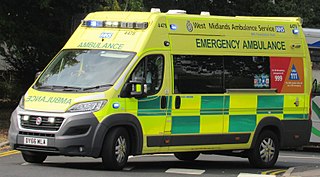
An ambulance is a medically equipped vehicle which transports patients to treatment facilities, such as hospitals. Typically, out-of-hospital medical care is provided to the patient during the transport.

A certified first responder is a person who has completed a course and received certification in providing pre-hospital care for medical emergencies. Certified individuals should have received much more instruction than someone who is trained in basic first aid and cardiopulmonary resuscitation (CPR) but they are not necessarily a substitute for more advanced emergency medical care rendered by emergency medical technicians and paramedics. First responders typically provide advanced first aid level care, CPR, and automated external defibrillator (AED) usage. The term "certified first responder" is not to be confused with "first responder", which is a generic term referring to the first medically trained responder to arrive on scene and medically trained telecommunication operators who provide pre-arrival medical instructions as trained Emergency Medical Dispatchers (EMD). Many police officers and firefighters are required to receive training as certified first responders. Advanced medical care is typically provided by EMS, although some police officers and firefighters also train to become emergency medical technicians or paramedics.
A medical director is a physician who provides guidance and leadership on the use of medicine in a healthcare organization. These include the emergency medical services, hospital departments, blood banks, clinical teaching services and others. A medical director devises the protocols and guidelines for the clinical staff and evaluates them while they are in use.
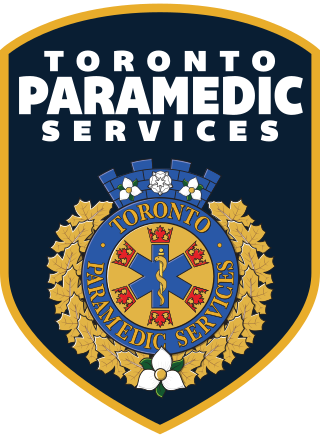
The City of Toronto Paramedic Services, is the statutory emergency medical services provider in Toronto, Ontario, Canada. The service is operated as a division of the City of Toronto, under the Community & Social Services cluster. The service is funded by the municipal tax base, and operates similarly to other municipal divisions, such as the Toronto Parks, Forestry & Recreation division, or the Toronto Water division, but retains operational independence from other divisions. While under municipal government control, it is subject to provincial legislation and licensing. It is not the only service provider in its area; private-for-profit medical transport services also provide routine, non-emergency transports and coverage for special events, but the statutory emergency medical system is the only provider permitted to service emergency calls.

A paramedic is a healthcare professional, providing pre-hospital assessment and medical care to people with acute illnesses or injuries. In Canada, the title paramedic generally refers to those who work on land ambulances or air ambulances providing paramedic services. Paramedics are increasingly being utilized in hospitals, emergency rooms, clinics and community health care services by providing care in collaboration with registered nurses, registered/licensed practical nurses and registered respiratory therapists.

In the United States, the paramedic is a allied health professional whose primary focus is to provide advanced emergency medical care for patients who access Emergency Medical Services (EMS). This individual possesses the complex knowledge and skills necessary to provide patient care and transportation. Paramedics function as part of a comprehensive EMS response under physician medical direction. Paramedics often serve in a prehospital role, responding to Public safety answering point (9-1-1) calls in an ambulance. The paramedic serves as the initial entry point into the health care system. A standard requirement for state licensure involves successful completion of a nationally accredited Paramedic program at the certificate or associate degree level.

The British Columbia Ambulance Service (BCAS) is an ambulance service that provides emergency medical response for the province of British Columbia, Canada. BCAS is one of the largest providers of emergency medical services in North America. The fleet consists of more than 500 ground ambulances operating from 183 stations across the province along with 80 support vehicles. Additionally, BCAS provides inter-facility patient transfer services in circumstances where a patient needs to be moved between health care facilities for treatment. BCAS also operates a medical evacuation program that utilizes both fixed-wing and rotary aircraft.
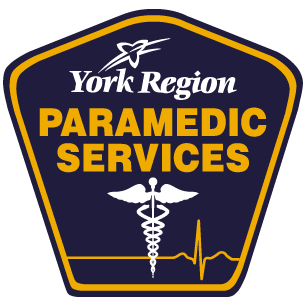
York Region Paramedic Services provides legislated land ambulance services and paramedic care for the local municipalities within York Region. Paramedic Services is a division of the Region's Paramedic and Seniors Service Branch. Prior to 2000, ambulance services were provided by 2 private operators, York County Hospital, Nobleton Volunteer Ambulance and Ontario's Ministry of Health. The patchwork of service also had York Region dispatched by 3 different Ministry of Health Communication Centres. Georgian CACC now dispatches the whole region on the Ontario Government leased Bell Mobility Fleetnet VHF trunked radio system. There are approximately 480 full-time paramedics serving the region. Paramedic Operations are based in East Gwillimbury, Ontario.
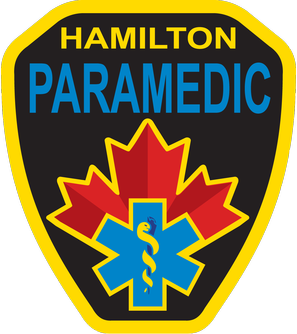
Hamilton Paramedic Service is the designated service provider for emergency medical services (ambulance) in the City of Hamilton, Ontario.

Emergency Health Services (EHS) is a branch of the Nova Scotia Department of Health tasked with providing emergency medical services. It is also responsible for transportation of patients between hospitals and medical facilities. At present, all ground ambulance and air ambulance service in Nova Scotia is contracted by EHS to Emergency Medical Care (EMC), a subsidiary of Medavie Health Services.
Ottawa Paramedic Service is a uniformed municipal public safety agency providing emergency and non-emergency paramedic care to residents and visitors of city of Ottawa, Ontario. It is the sole, licensed, statutory provider and is operated directly by the city. The Service is an independent third service provider. This means that it is part of the Emergency and Protective Services department of the city but functions as an independent and separate agency from other services. The Ottawa Paramedic Service operates in compliance with legislation and licensing standards overseen by the government of Ontario. It also provides routine, non-emergency transports and emergency paramedic coverage for special events. It is the only service provider permitted to service medical emergency calls in the City of Ottawa.
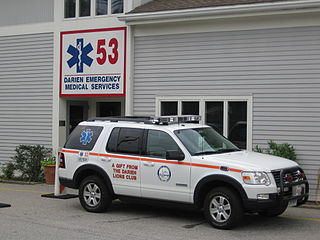
In the United States, emergency medical services (EMS) provide out-of-hospital acute medical care and/or transport to definitive care for those in need. They are regulated at the most basic level by the National Highway Traffic Safety Administration, which sets the minimum standards that all states' EMS providers must meet, and regulated more strictly by individual state governments, which often require higher standards from the services they oversee.
Emergency Medical Service in Germany is a service of public pre-hospital emergency healthcare, including ambulance service, provided by individual German cities and counties. It is primarily financed by the German public health insurance system.
Emergency medical services in the Netherlands is a system of pre hospital care provided by the government in partnership with private companies.

Air medical services are the use of aircraft, including both fixed-wing aircraft and helicopters to provide various kinds of medical care, especially prehospital, emergency and critical care to patients during aeromedical evacuation and rescue operations.

The Ambulance Operators Association of Nova Scotia (AOANS) was the provincial association representing ambulance company owners in Nova Scotia. The association's focus was negotiating with the Government of Nova Scotia over funding and private ownership of ambulance services. The AOANS was also contracted by the Government of Nova Scotia to provide a training program for ambulance personnel and an ambulance inspection program. Between 1994 and 1999, after the publication of the Murphy Report, Nova Scotia transitioned to a single ambulance service provider. This resulted in the AOANS members being bought–out and their ambulance services merged into the new system. The AOANS was formally dissolved in 2002.
Middlesex-London Paramedic Service is the statutory Emergency medical services provider for Middlesex County, and London, Ontario. The service provides Paramedic Services to the City of London, the Townships of Adelaide Metcalfe, Lucan Biddulph, Middlesex Centre, North Middlesex, Southwest Middlesex, Strathroy-Caradoc, Thames Centre, Newbury. Middlesex London Paramedic Service delivers ambulance service to Middlesex and London in accordance with service and patient care standards set by the County of Middlesex, City of London, and Ministry of Health and Long Term Care. Medical oversight for controlled medical acts is provided under the direction of the Southwestern Ontario Regional Base Hospital Program.
























